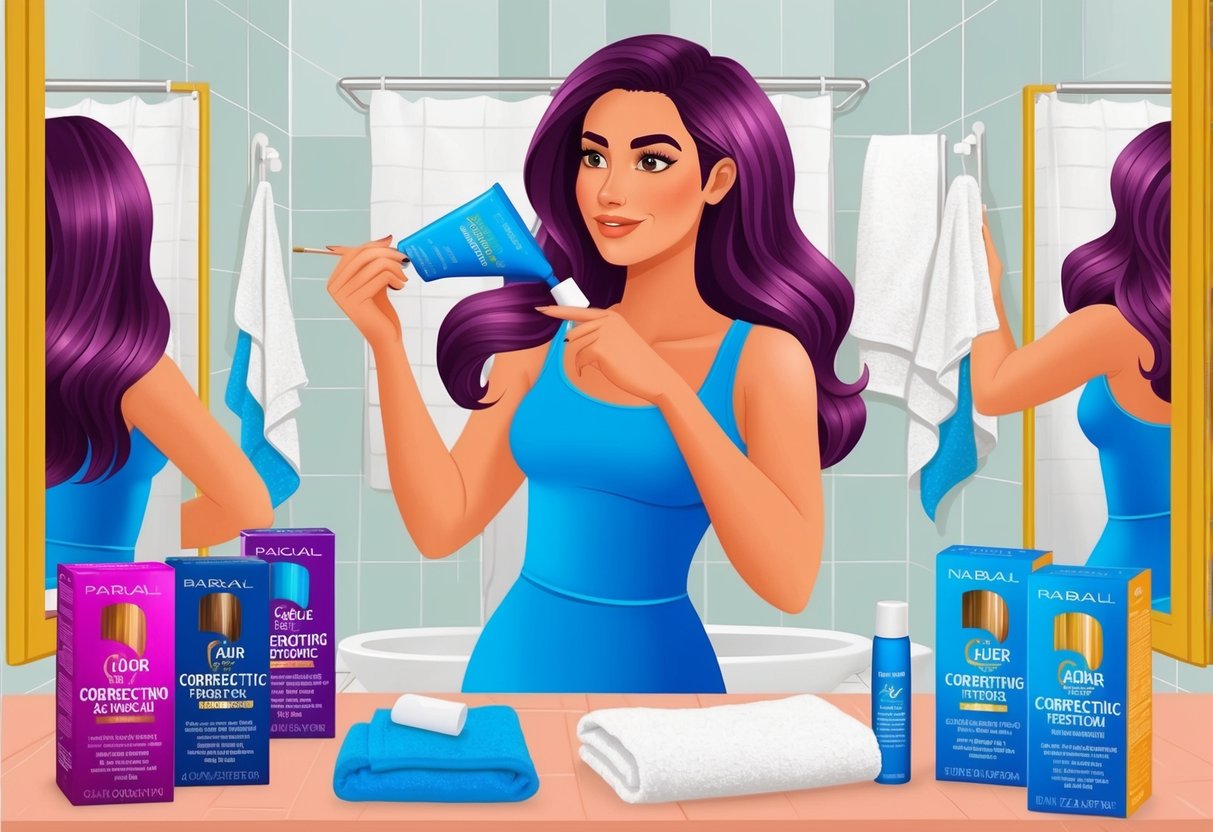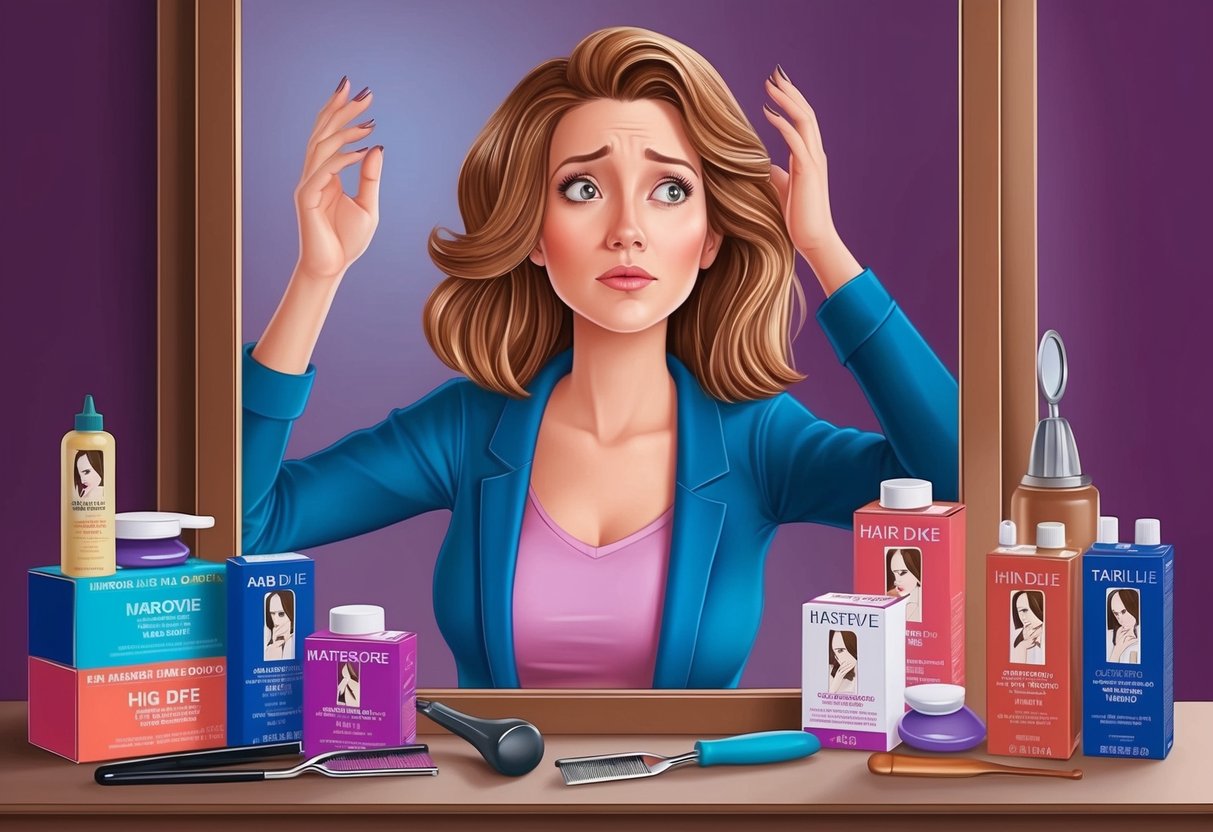
Caring for Hair After Color Correction

Restoring hair health after a color correction involves using targeted treatments to support hair condition.
Repair damage and preserve color by paying attention to both post-color repair and daily maintenance.
Repairing Damaged Hair
Color corrections can leave the hair cuticle more porous and vulnerable, which often leads to dryness, split ends, and breakage. Deep conditioning treatments are essential for replenishing lost moisture and nutrients.
Weekly masks with ingredients like keratin, argan oil, or shea butter help restore elasticity and smoothness. Limiting the use of hot tools like flat irons and curling wands also supports recovery.
Whenever heat styling is necessary, always apply a thermal protectant. Regular trims are another effective way to minimize split ends and encourage stronger hair growth.
Avoid washing hair with hot water, as this can raise the cuticle and cause color to fade more quickly. Use a microfiber towel or soft T-shirt to gently blot hair dry instead of rubbing, as friction can worsen breakage.
Choosing the Right Hair Care Products
Selecting the correct hair care products plays a crucial role in maintaining both hair condition and color vibrancy. Opt for shampoos and conditioners labeled as color-safe or sulfate-free since harsh detergents can strip pigment and moisture from already sensitive strands.
Products with protein, like hydrolyzed wheat protein or silk amino acids, support cuticle repair and help restore strength. Consider using a clarifying shampoo only once a week to remove buildup but avoid frequent use as it may accelerate fading.
Incorporate leave-in conditioners and lightweight oils, such as argan or jojoba, into the styling routine to provide ongoing nourishment and shine. Daily protection with UV filters or antioxidant serums helps guard against color loss due to sun exposure.
For additional guidance on product selection and care after coloring, resources like Real Simple’s guide to fixing hair dye mistakes offer expert-backed advice.
Frequently Asked Questions

Hair color correction at home requires careful selection of products and techniques. Specific solutions depend on the issue—whether it’s brassiness, color that’s too dark, bad highlights, or an unsatisfactory salon result.
What methods can correct orange tones after a hair dye mishap?
Using a purple or blue toning shampoo can help neutralize orange or brassy hues left after dyeing hair. These products deposit cool pigments that counteract unwanted warmth and help restore more natural shades.
A color-depositing hair mask designed for brassiness can also improve overall tone. If results are stubborn, a professional toner applied at home may help eliminate orange tones.
What are the steps to lighten hair that was dyed too dark?
A clarifying shampoo or treatment is often the first step to fade excess hair dye, gradually lifting color over a few washes. If the dye remains too dark, a color remover that does not use bleach or ammonia can shrink dye molecules and decrease intensity.
Multiple gentle treatments—rather than one strong chemical process—are safer to prevent damage. Always follow with a deep conditioning treatment to restore moisture after any color correction process.
How can you safely re-dye your hair if you’re unhappy with the color?
Wait at least a few days between coloring attempts to minimize damage. Before re-dyeing, use a clarifying shampoo to strip any product buildup and faded color for better results.
Always perform a strand test when using home hair color to preview the outcome. For significant changes or concerns, consulting with a professional, even virtually, ensures safer results.
What are the best ways to fix highlight lines that are too harsh?
A toner can soften harsh highlight lines by blending them with the natural base color, resulting in a more seamless effect. Gloss treatments and color-depositing masks can also help to tone down the contrast between highlights and untreated hair.
Blending with a slightly darker root touch-up product along the part can further disguise harsh lines.
What to do when you receive a poor coloring job from a salon?
Begin by contacting the salon to report your dissatisfaction—most professionals will offer a free adjustment or correction. If correction is not possible or the salon service was extremely poor, seek out a reputable colorist for further advice.
Using at-home treatments like deep conditioners can also help hair recover while awaiting professional correction. Avoid using strong chemicals or box dyes in the meantime to prevent worsening issues.
How can toner be used to adjust poorly done highlights?
Toner can target unwanted yellow, gold, or orange tones that often appear in uneven highlights. By selecting a toner shade opposite to the undesired tone on the color wheel, it helps neutralize the brassiness.
This process enhances the overall highlight appearance. For at-home use, follow manufacturer instructions and perform a strand test first.
Toners work best on pre-lightened hair. They are effective following a highlight correction.



